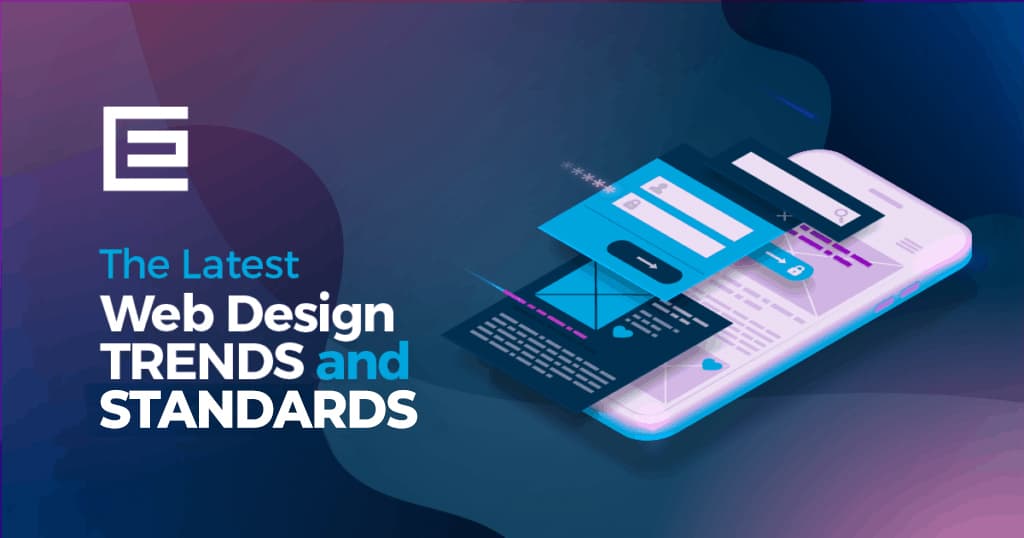Aligned Position Web Design: Professional Web Development to Maximize Your Online Impact
Aligned Position Web Design: Professional Web Development to Maximize Your Online Impact
Blog Article
The Most Effective Sorts Of Website Design to Enhance Customer Experience and Engagement
In the ever-evolving landscape of digital interaction, the efficiency of Web design dramatically influences customer experience and engagement. Various style approaches, such as minimalist, responsive, and interactive formats, each offer one-of-a-kind advantages that can accommodate diverse user demands. Recognizing which kinds of Web layout best serve these objectives can be pivotal for services intending to boost consumer satisfaction and retention. The question continues to be: which style aspects truly resonate with customers and foster significant interaction? The exploration of these concepts reveals crucial understandings that may redefine your approach to website design.
Minimal Web Design
As digital landscapes come to be progressively chaotic, minimal website design has become an effective technique to improving individual experience. This design approach prioritizes simplicity, concentrating on essential components while getting rid of unneeded diversions. By using enough white area, uncomplicated navigation, and a minimal color scheme, minimal style cultivates clarity and directs individual attention to vital web content.
The core principle of minimal website design is to create a seamless communication for individuals. By minimizing cognitive load, individuals can swiftly comprehend information without feeling bewildered. This direct technique not only enhances use but additionally urges involvement, as visitors are most likely to discover a website that is aesthetically enticing and simple to browse.
Furthermore, minimalist design commonly emphasizes typography and images, using these aspects purposefully to share messages properly. This concentrate on necessary parts can enhance brand identification and produce an unforgettable user experience. Basically, minimal website design is not just a trend; it is a thoughtful method that acknowledges the relevance of user-centered layout. By removing extraneous components, developers can develop an extra appealing, effective, and pleasurable Web experience for all customers.
Responsive Web Style
In today's varied electronic environment, responsive website design has come to be necessary for producing a seamless user experience throughout a plethora of devices. As customers access sites on smartphones, desktops, laptop computers, and tablet computers, the ability of a site to adjust its format and web content to different display dimensions and resolutions is crucial.
Responsive Web layout uses adaptable grids, images, and CSS media queries to make sure that Web material is offered efficiently, despite the device utilized. This approach not only improves the visual charm of a site yet additionally dramatically enhances functionality. Users are a lot more likely to engage with a site that provides a consistent experience, as it removes the stress of needing to focus or scroll excessively.
By embracing responsive style, businesses can enhance their exposure and get to a more comprehensive target market. In summary, responsive Web layout is a basic technique that improves individual experience, involvement, and total satisfaction.
Interactive Web Design
Responsive Web style prepares for improving user experience, however interactive website design takes this a step additionally by engaging users in a more dynamic means - Aligned Position Web Design. By integrating aspects such as animations, clickable prototypes, and real-time comments, interactive website design mesmerizes customers, attracting them into a richer browsing experience
This method not just fosters involvement however additionally motivates individuals to check out content proactively instead than passively eating it. Techniques such as gamification, where users make incentives for finishing tasks, can substantially enhance the moment spent on a website and boost general fulfillment. Interactive features can streamline complicated info, making it extra absorbable and pleasurable.

Including interactive style aspects can also bring about higher conversion rates, as users are more probable to involve with a site that actively entails them. Aligned Position Web Design. Ultimately, interactive website design changes individual experiences into unforgettable journeys, making certain that visitors return time and once again
Apartment Design
Characterized by its minimalistic strategy, level style emphasizes simpleness and capability, stripping away unnecessary components and concentrating on important functions. This layout approach focuses on usability, guaranteeing that customers can navigate interfaces effortlessly and performance. By using right here a tidy visual, level design removes the mess frequently located in a lot more luxuriant designs, thus boosting customer concentrate on web content and functionality.
The characteristic of level style depends on its use vibrant colors, straightforward typography, and geometric shapes. These aspects contribute to an aesthetically appealing user interface that is both approachable and modern. In addition, level layout fosters a feeling of clarity, enabling users to determine vital actions and details without distraction.
Additionally, flat style is especially efficient in responsive Web style, as its simplicity translates well throughout numerous devices and display sizes. By focusing on essential attributes, level design not just meets individual needs yet additionally encourages seamless interaction, making it an important element of reliable Web layout strategies.
Adaptive Website Design
Adaptive website design customizes the user experience by creating several repaired layouts customized to different display sizes and gadgets. Unlike responsive design, which fluidly adjusts a single format, adaptive style employs distinct layouts for particular breakpoints, ensuring ideal presentation on numerous systems. This method allows developers to concentrate on the one-of-a-kind characteristics of each gadget, boosting usability by supplying specifically what users need based on their context.
One of the key advantages of flexible website design is its capability to optimize lots times and performance. By offering customized web content and photos that fit the individual's tool, web sites can reduce information usage and improve loading rates. This is particularly beneficial for individuals with slower links or limited information strategies.

Additionally, adaptive design assists in a more regulated and consistent branding experience. Considering that designers produce numerous layouts, they can make certain that the visual elements align with the brand's identification throughout various systems - Aligned Position Web Design. This causes a natural user experience, boosting engagement and promoting individual retention
Final Thought
Minimal design fosters clarity and focus, while receptive layout ensures adaptability across numerous devices, advertising accessibility. Collectively, these layout comes close to contribute to the production of user-friendly settings that not just improve satisfaction however likewise drive greater conversion prices, highlighting their critical relevance in modern Web style strategies.

Minimal design cultivates quality and focus, while responsive style guarantees adaptability across different devices, advertising availability. Collectively, these layout comes close to contribute to the creation of easy to use environments that not only improve fulfillment yet also drive higher conversion prices, emphasizing their vital significance in modern Web layout techniques.
Report this page